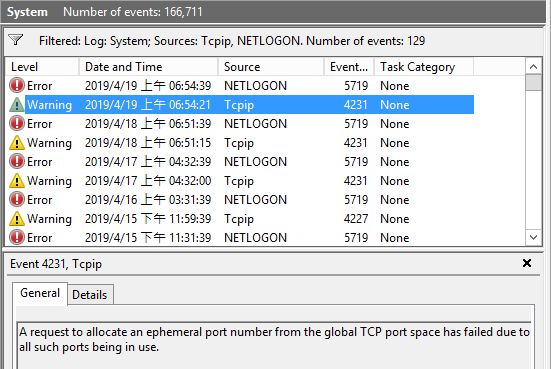


#EPHEMERAL PORT FULL#
Some common standards, maintained by IANA, are below and a full list can be found here: web browsers typically know what Port to use to connect to web servers. The reason users (humans) don’t have to specify the port number themselves whenever they use an application is that certain types of programs always use the same Port. When an application is sending data to a server, it always adds the port number to the address header in the packet. When a data packet is received by a server, it will analyse the port in the address and then send that packet to the relevant application. Applications awaiting data are said to be “listening” on their port (with each port being unique to an application within the network and on that server). The assigning of which ports are used by which type of application is done by a body called the Internet Assigned Numbers Authority (IANA), which helps to ensure that different type of applications don’t end up using the same port.

With this approach, servers have running applications awaiting data to be sent to them and each application will have been bound to a port.

The entire range of port numbers go from 0 – 65535 The common notation for depicting this in documentation is :, for e.g. When an application sends data, the destination address comprises of the IP address and another number called a port. This leads to an issue that is resolved by the usage of ports: When an application is sending data to a server which has many applications running on it at the IP address specified, how does the sending application avoid sending the data to the incorrect application on the destination server? The solution – Ports server health monitoring applications used by admins that connect to servers used to manage servers). However, the server running the application will also have other applications running on it that are also connected to the network (for e.g. an email client connecting to it’s email server). Thus, IP addresses are used to connect two applications together (for e.g. For example might resolve into 123.12.1.234 (taking a name and translating that to an IP address is done by a DNS server doing a simple look-up from a list). a server will have multiple monitoring applications used by admins to measure and log the health of a server in addition to the primary business application(s) running on it.Īs described in a separate blog post focusing on IP addressing, servers, and the applications that run on them (particularly web applications) have names, and those names 'resolve' into IP addresses using DNS. And devices, servers especially, always have more than one application running – for e.g. TCP is “connection-orientated” which means it's for connecting the applications running on devices together. Such functionality requires another protocol, typically TCP. IP does not handle packet ordering or error checking. Packets however may arrive at their order via dirrerent network routes and thus might not all arrive in their correct order. IP is the primary way in which network connections are made. IP is the address system of networking and has the core function of delivering packets (smaller chunks of larger data) of information from a source device to a target device. Transimission Control Protocol / Internet Protocol (TCP/IP) are two protocols that are used together to provide core functionality within networking. I have also published a blog post looking into IP addresses in further detail, an interrelated subject to IP Ports, which will help complement the information posted here.
#EPHEMERAL PORT SERIES#
In continuation of our series delving into how the Cloud works, in this blog post, we will be looking at IP ports – what they are, what they do and how and why are they used.


 0 kommentar(er)
0 kommentar(er)
